Baltimore, Maryland
Mid 1940s—Christmas Morning
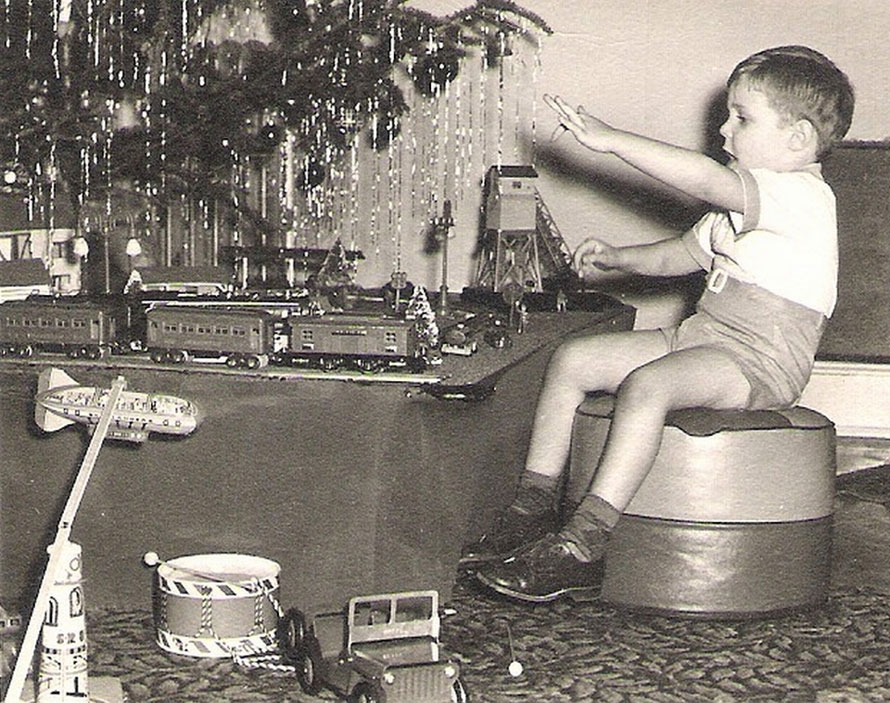
My little boy’s patience has worn thin. It may still be dark outside, but my mind can’t be contained. What did Santa leave? How did he do the Christmas Garden? I’ve got to know! With popping eyes, I run into the living room. My parents, sleepy eyed, saying, “Only the Christmas Stocking, Frank!” “Okay,” I reply. I have to go right by the Christmas Garden to get my Christmas Stocking. How could I not stop and look? A couple of new houses, a RAILROAD GATE (!!) with lights that flash! The stocking is emptied on the rug, its gifts rummaged through. I hear the train whistle (my dad has quietly entered the room and plugged in the transformer) the train is arriving at the depot. “Let me! Please!” I plead.
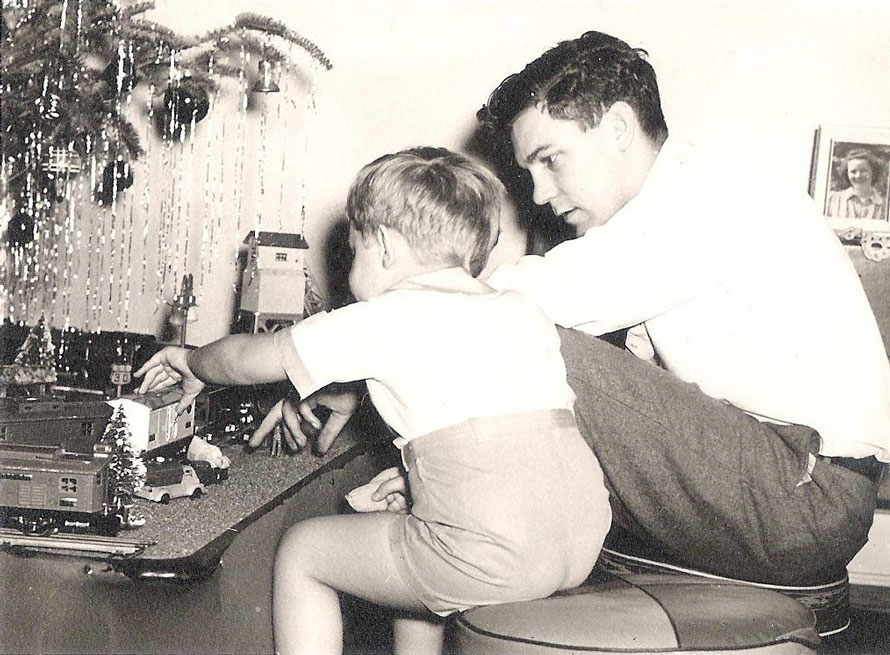
How could any boy not be overjoyed by the magical wonderland that Santa had created under the Christmas tree? Trains running through a little village, over a bridge and through the mountains, arriving once again at the village.
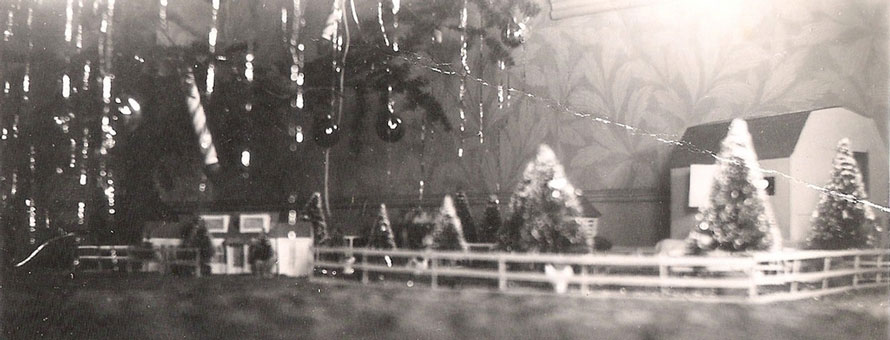
My parents and I would help Santa by laying the track, securing the building lights, setting up the Christmas tree in the middle and stringing the lights; still it was Santa who created the magic, each year adding a new accessory or railroad car. When I stopped believing, I got to help create the magic. However, it wasn’t until I had children of my own, that I realized that it was love that made the magic—love of the delight in the eyes of a child, love of the illusion created, but most importantly, the love of sharing in the present, memories past.
I grew up in a family that loved trains—full size and toy. At my Nana & Pop’s house was another magical Santa-created delight. My Uncle Jimmy had toy trains. He is one that got the Train Garden going at his fire station every year. And at the Armory, well—No 1 Gauge, Standard Gauge, O-Gauge, and even S-Gauge. As my friends and I got older, we’d argue about which gauge was better. For me it was “O” (even though there were a few Standard Gauge accessories that showed up every Christmas). The trains were Lionel, Ives, Hafner, Marx, and American Flyer O.
It all began way before I was born. My dad’s dad had grown up with his dad’s toy trains in the late 1800s. I don’t know what he had, but by the time my dad came along, Ive’s O-Gauge had entered the picture, along with a number of pre-war Lionel.
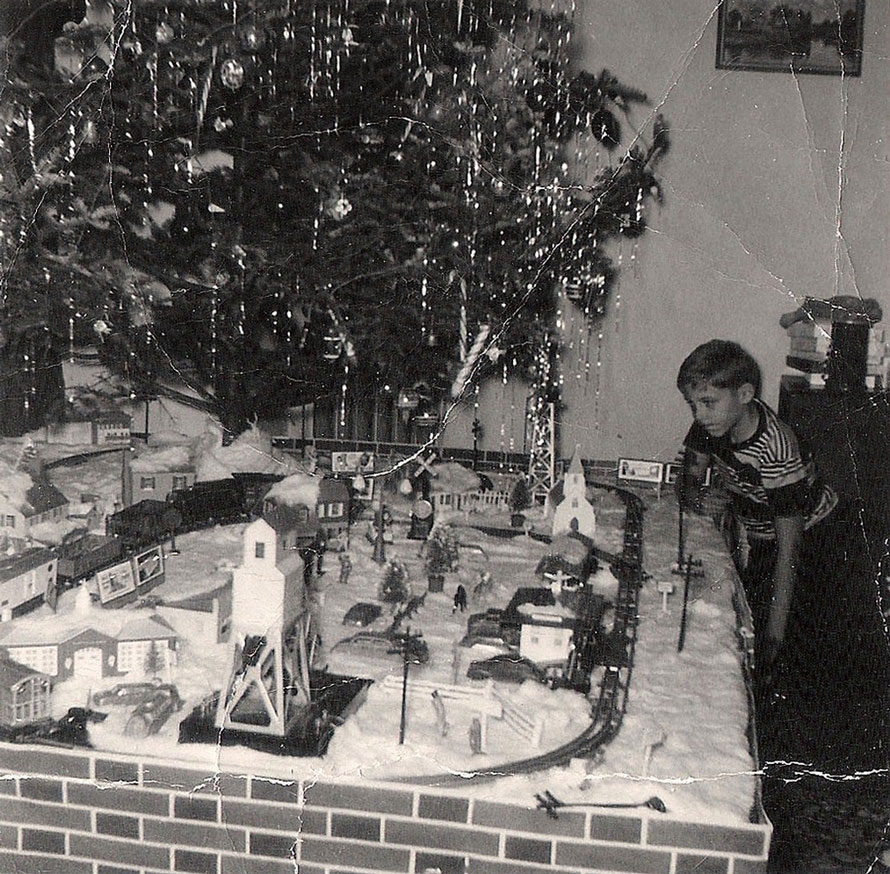
Those trains still exist today, although claimed by my kids. And speaking of my kids: The tradition continues still, all the way down to my great grandchildren and their toys trains. And it still continues in my home, all these years later. Each year when my Village of Make Believe is finally completed (alas without Santa’s help) and the lights are turned on, I am once again a young boy in Baltimore on a Christmas morning.
The Tradition Continues
It wasn’t until I had children of my own, that I realized that it was love that made the magic
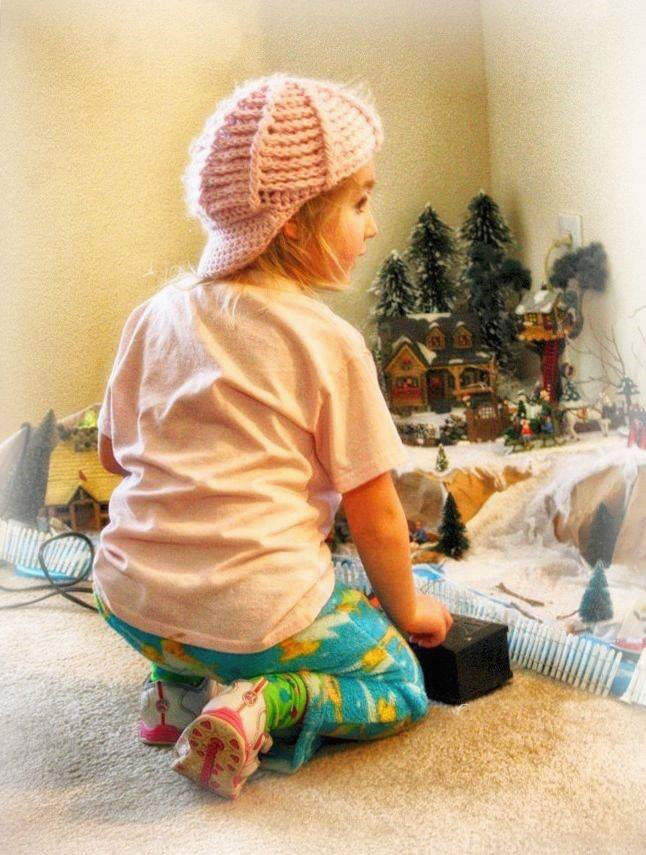
Although I never know how each year’s Village of Make Believe will end up until it is done, two rules underwrite it all. First, it must be whimsical. That means “Whimsical Scale.” Secondly, it must create an illusion of the nonsensical and fantasy, along with the “real.” Over the years the Village has evolved from the Plasticville of my youth, to card stock, to thrift store ceramic village finds. Rarely do I spend over ten dollars on a house, even Studio 56. The trains that were not gifts were all well under market price. The people—mostly quarter and half-dollar finds. What makes the Village—at least for me—is not the completed village (although it always excited me), but the construction: scrounged up bits of Styrofoam, cardboard, scraps of wood, and brown paper grocery bags, all fitted together like a puzzle. Each hill, each valley created out of my mind as I go along. Until recently, the water was created out of blue plastic grocery bags (can’t find them here in Austin, Texas). Just about the only thing purchased for the basic layout is cotton by the yard from the fabric store.
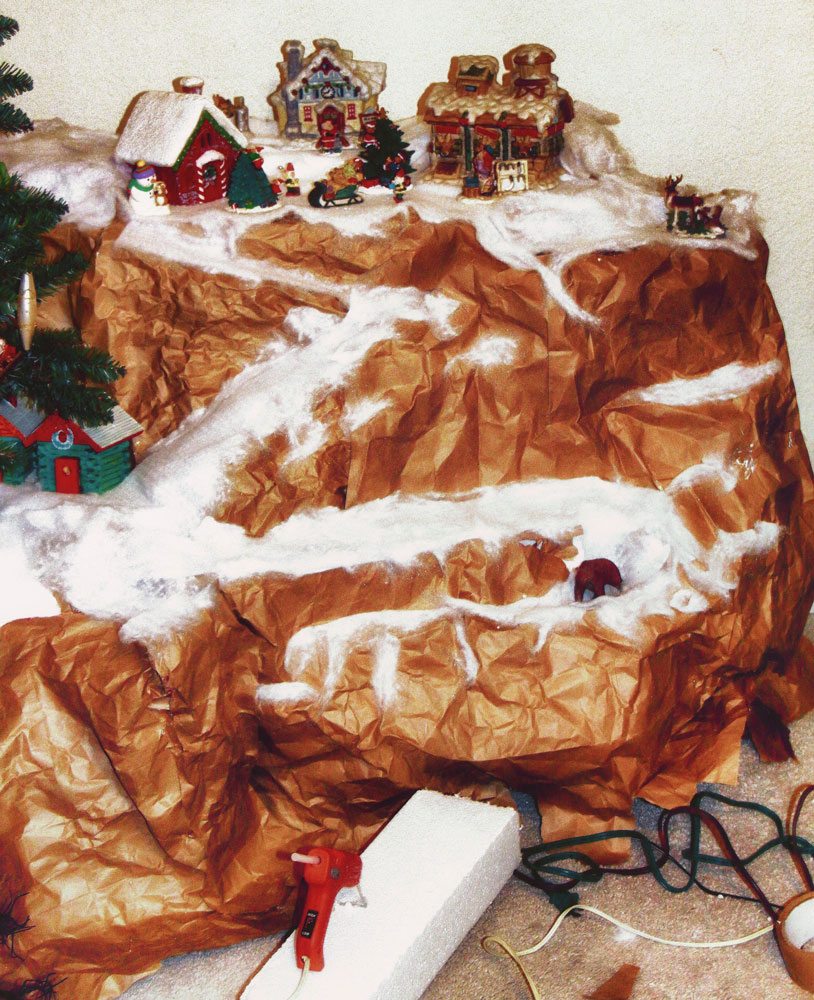
Last year the Village of Make Believe was about 140 square feet on the floor. Since last year’s Village and this year there has been a change of homes. The space will be a little smaller, the configuration of that space, much different. That excites me. Something entirely different than before. I have no idea what that will be. By Thanksgiving I will know. I begin a week or two before Thanksgiving. The Village of Make Believe delights those who come to visit from Thanksgiving through Epiphany, the twelfth day of Christmas.
Join with me now as I share a few trackside images from the Village of Make Believe from last year along with a few others.
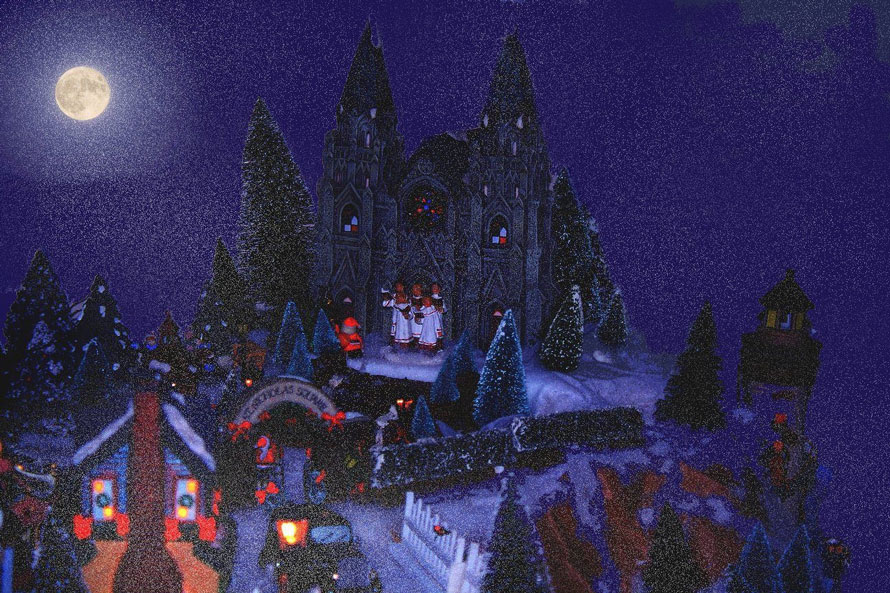
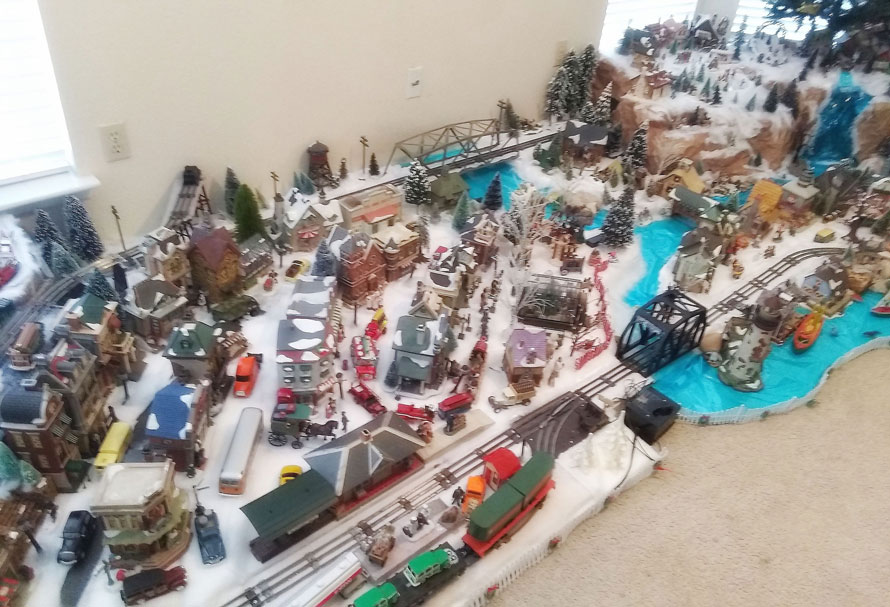
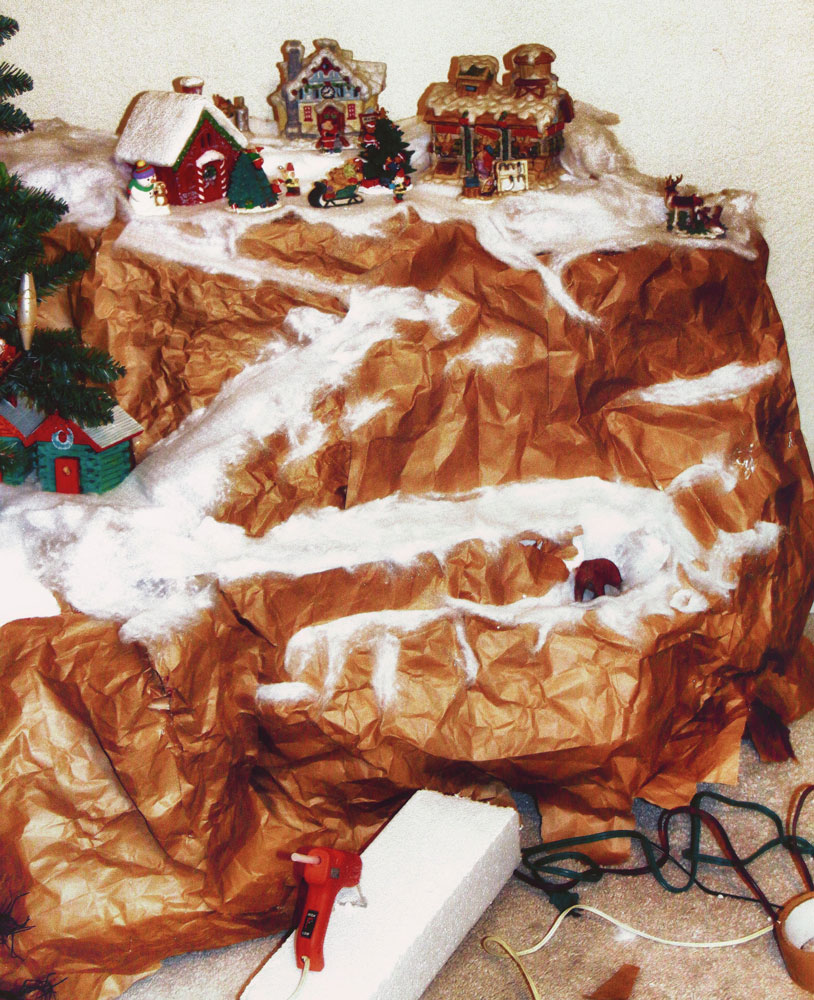
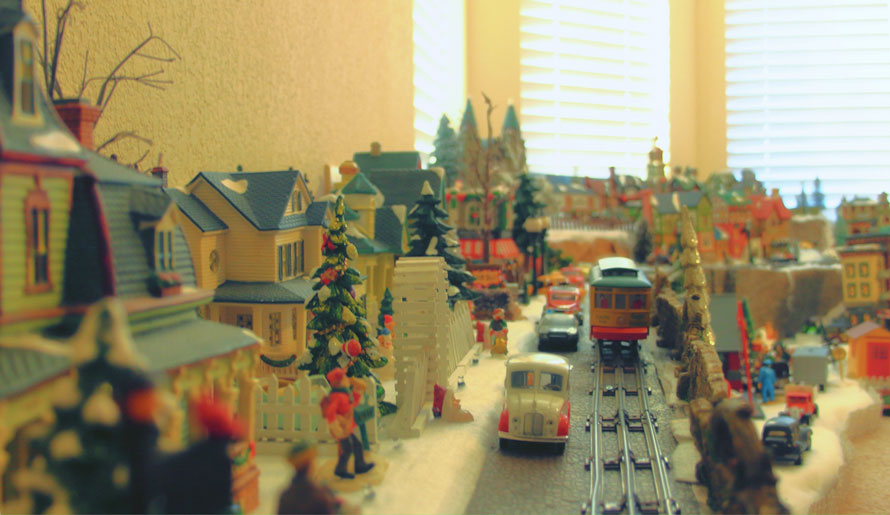
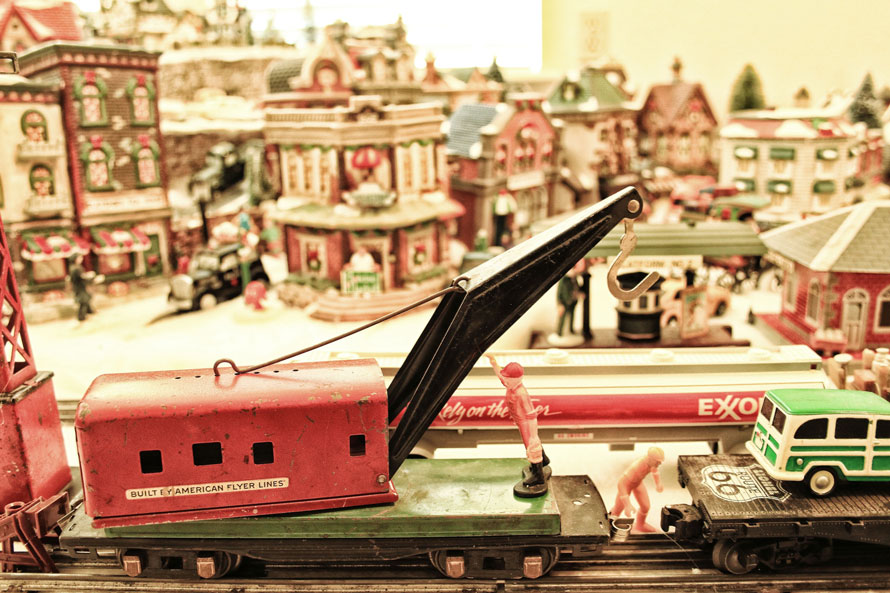
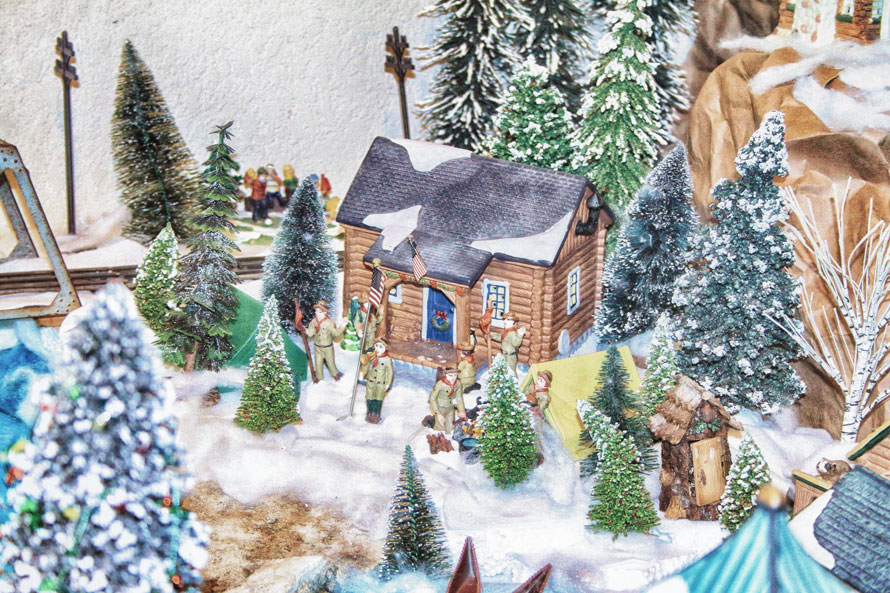
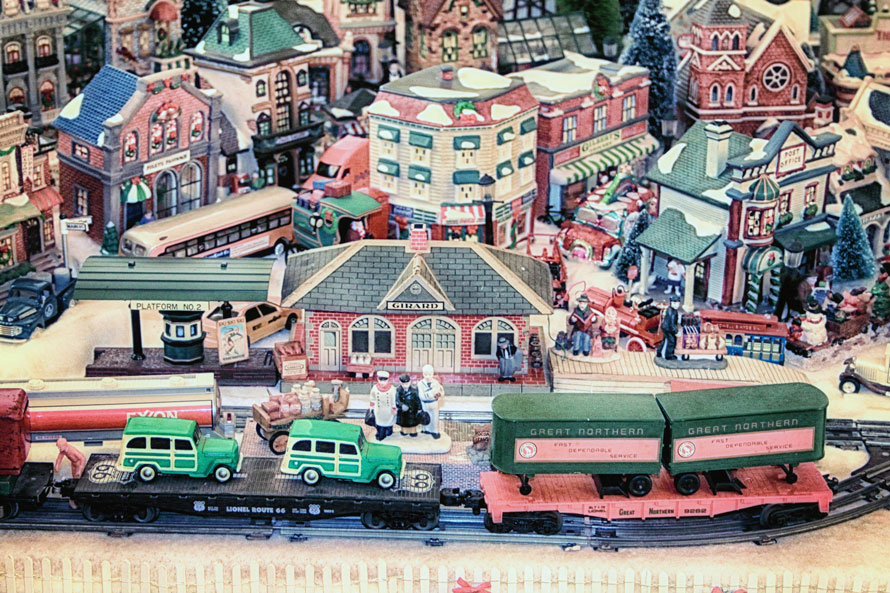
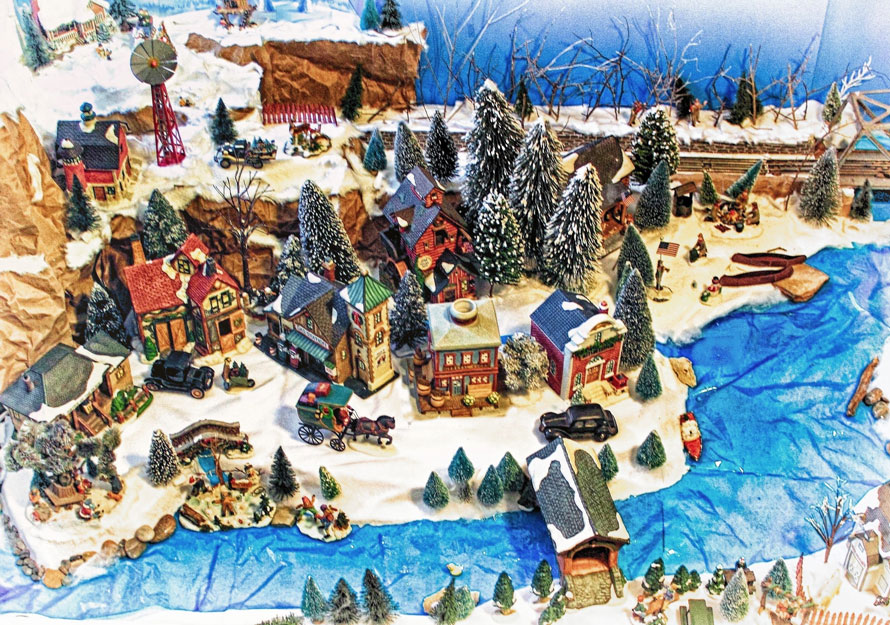
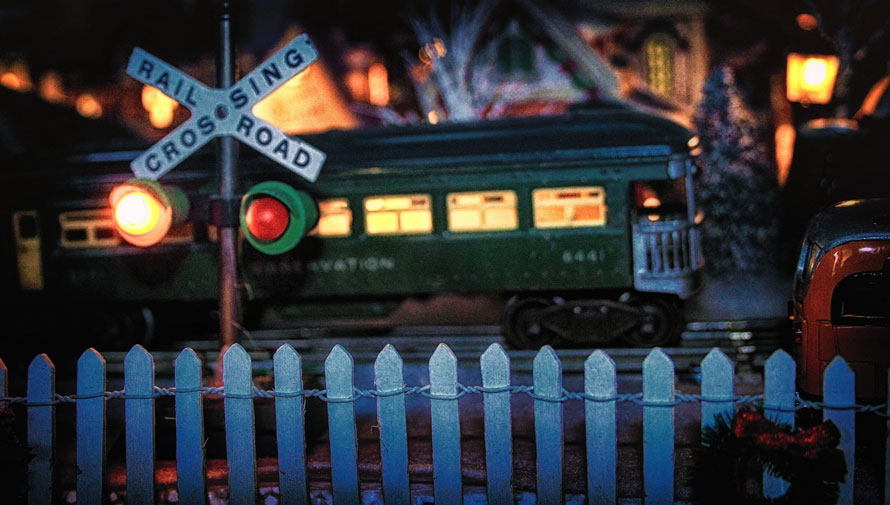

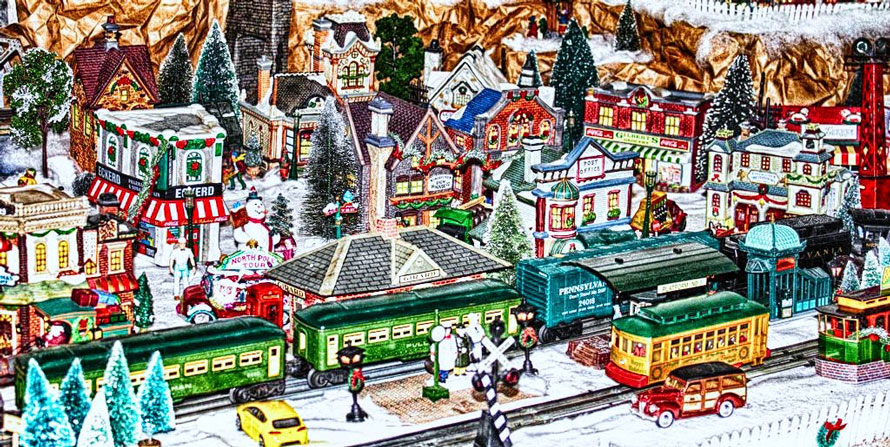
Each year when my Village of Make Believe is finally completed and the lights are turned on, I am once again a young boy in Baltimore on a Christmas morning.
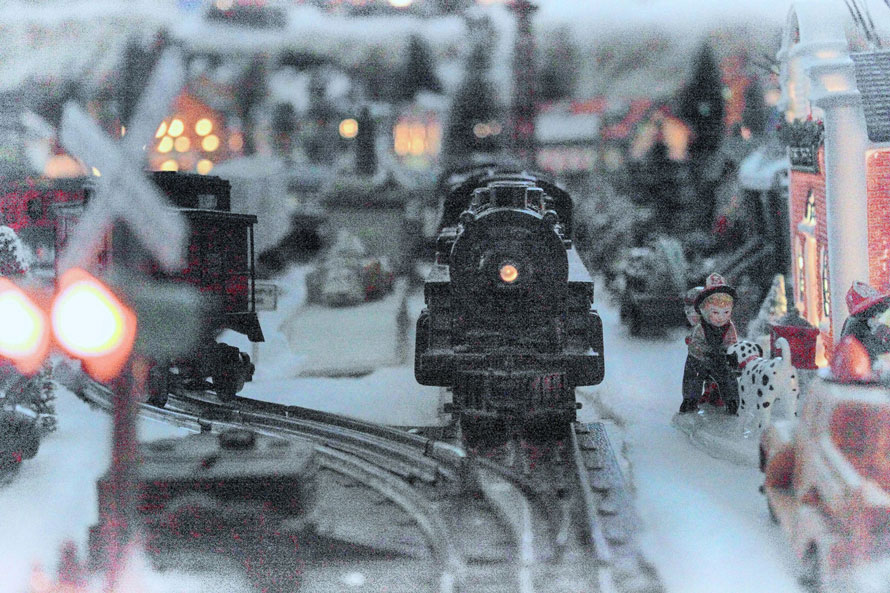
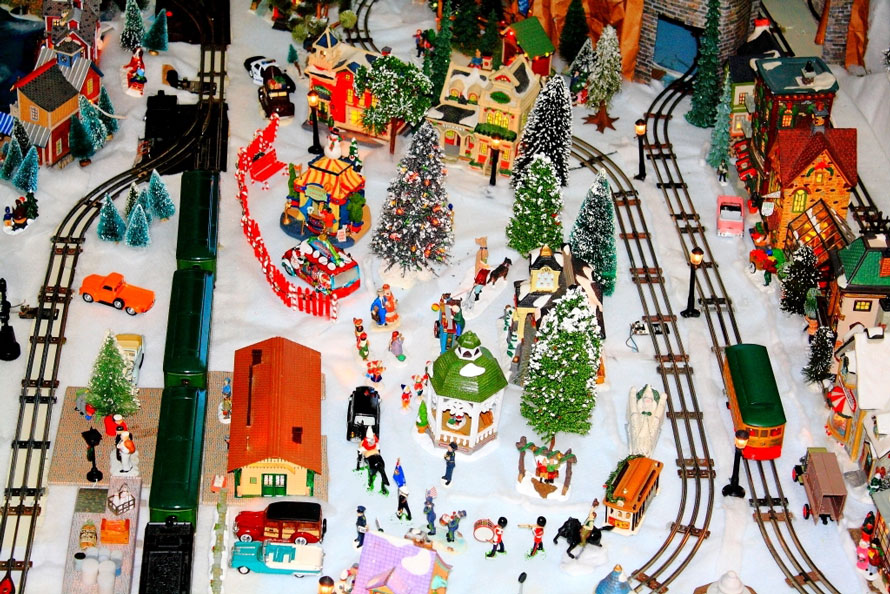
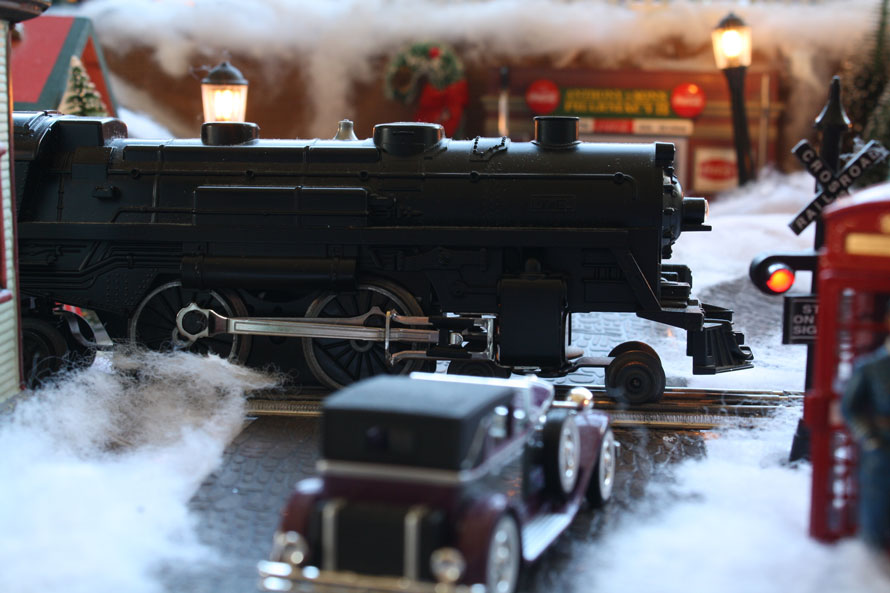
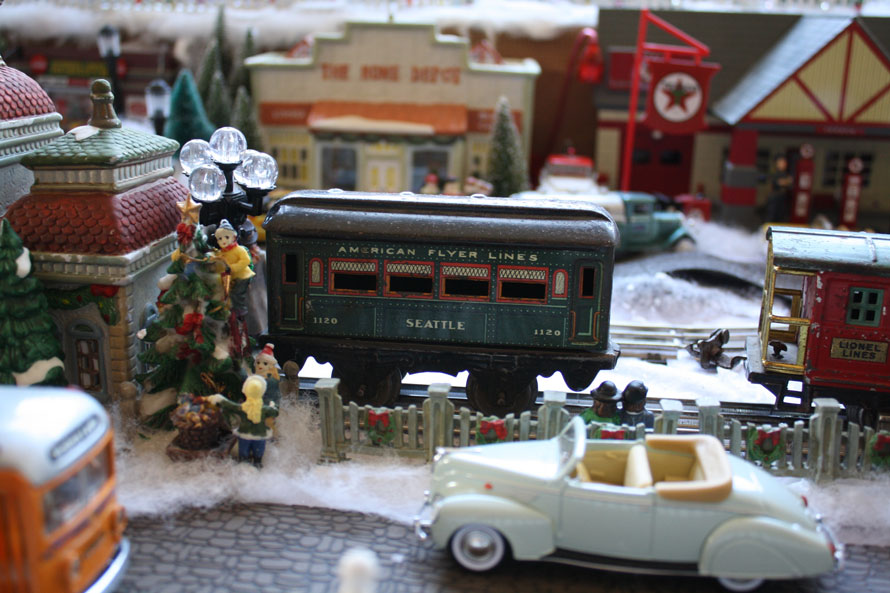
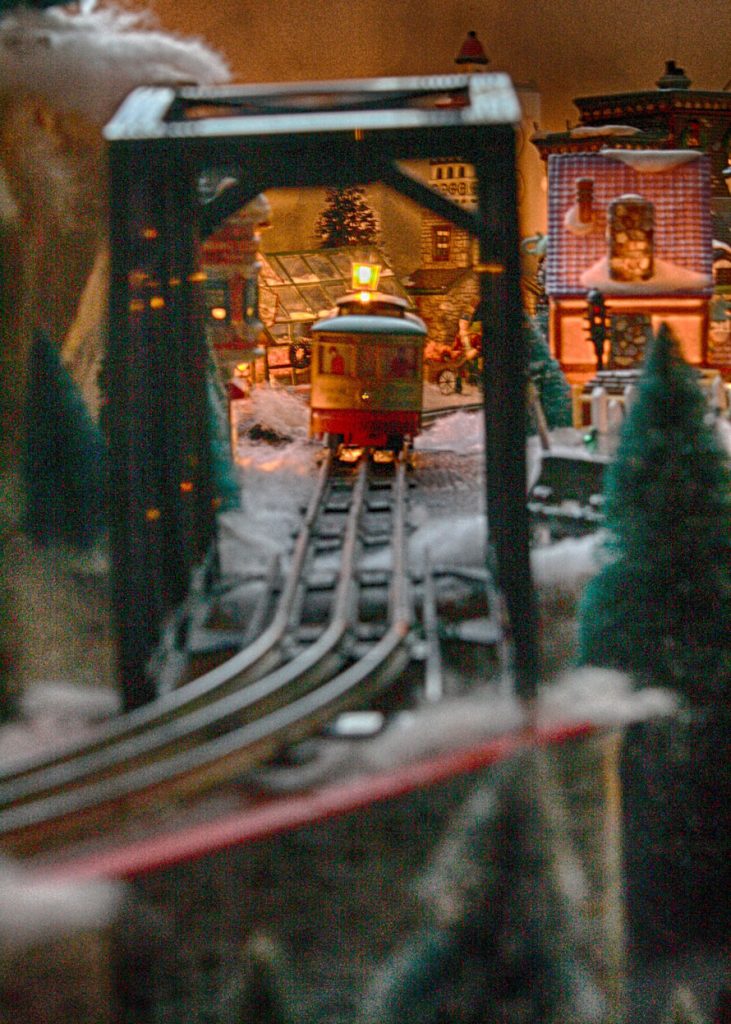
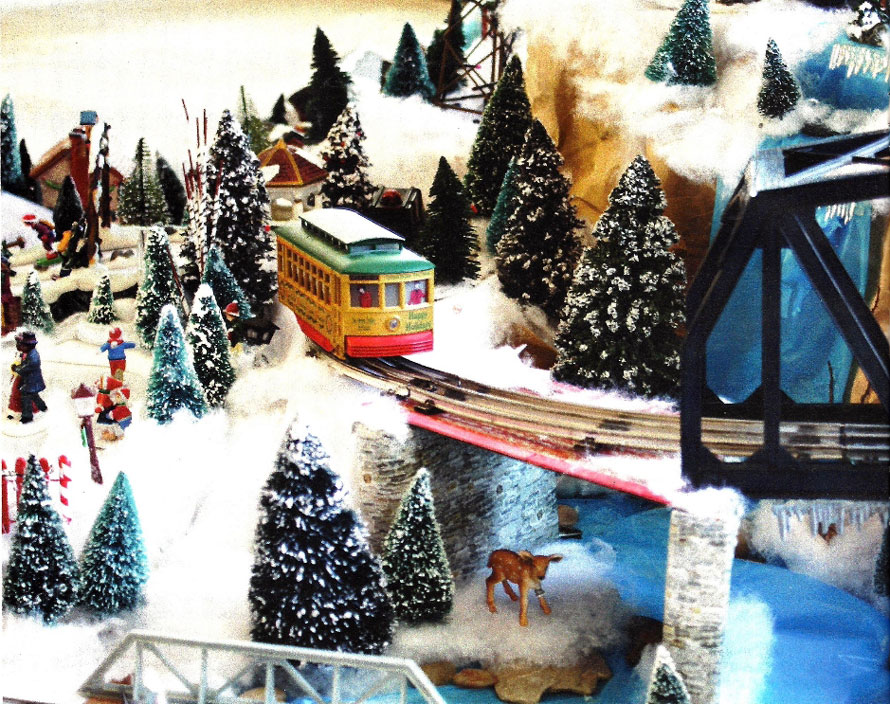
There is much more to be seen on both my website and Facebook page: Website: https://frankamills.com/makebelieve/ Facebook: https://www.facebook.com/villageofmakebelieve/
Frank Mills – Photographs and text Copyright 2019
What a lovely tradition! I’m glad you have been able to keep this tradition going over the decades. Kudos to your parents and grandparents for starting this tradition.
Thank you. It is now my grand children and great grandchildren who are continuing the tradition.
Love it !!
Thank you, Martin. Much appreciated.
I can almost smell the tree and the Lionel Smoke running by right now! My mom too would make the village with the Cardboard Houses and the metal people. Keep up the tradition!
I am glad that this little piece brought back those memories. Your mom must have been quite talented. Thank you for commenting.
Wonderful traditions. I love how warm and cheery the lights appear inside the model trains and villages. Merry Christmas!
http://www.thepulpitandthepen.com
Thank you, Jeff. I remember when I was a kid and helping my parents be Santa Clause for my younger siblings, I always wanted to get those building lights just right. In those day the lights were colored Christmas tree lights. It seemed that each building had its own need for a particular color.
Do you know what year(s) the A F crane & passenger cars date from?
The #1120 passenger cars were manufactured from were manufactured from 1923-1929/30. The “squared-off” roof marks the car as one of the earlier cars (1923 -25?). As for the crane car, the coupler dates it to 1938, the only year that this sort of “automatic coupler” was used. However, it is not impossible that the car itself is of an earlier year. When A.C. Gilbert took over American Flyer in 1938 they reissued older stock. I guessing that this is true for this car as the “Built by American Lines,” stamped on the car is only identifying manufacture’s mark on the car. I would love to know more about these cars.
Oh how this brought back my time when I was this age! I have pictures that are just like yours my parents had taken of me. later on I went to HO and the trains were sold off how I wish I had them again. but I do have my wifes 🙂 I would put to many of those pills in the engine and jam it up and my mother would take it apart and clean it out for me. I was always a pain in the ass 🙂 thank you for sharing
Hi Frank,
Even though “Trackside” was received after Christmas, it was not too late to reinstate a forgotten tradition under our tree.
Thanks for your article.
Peter